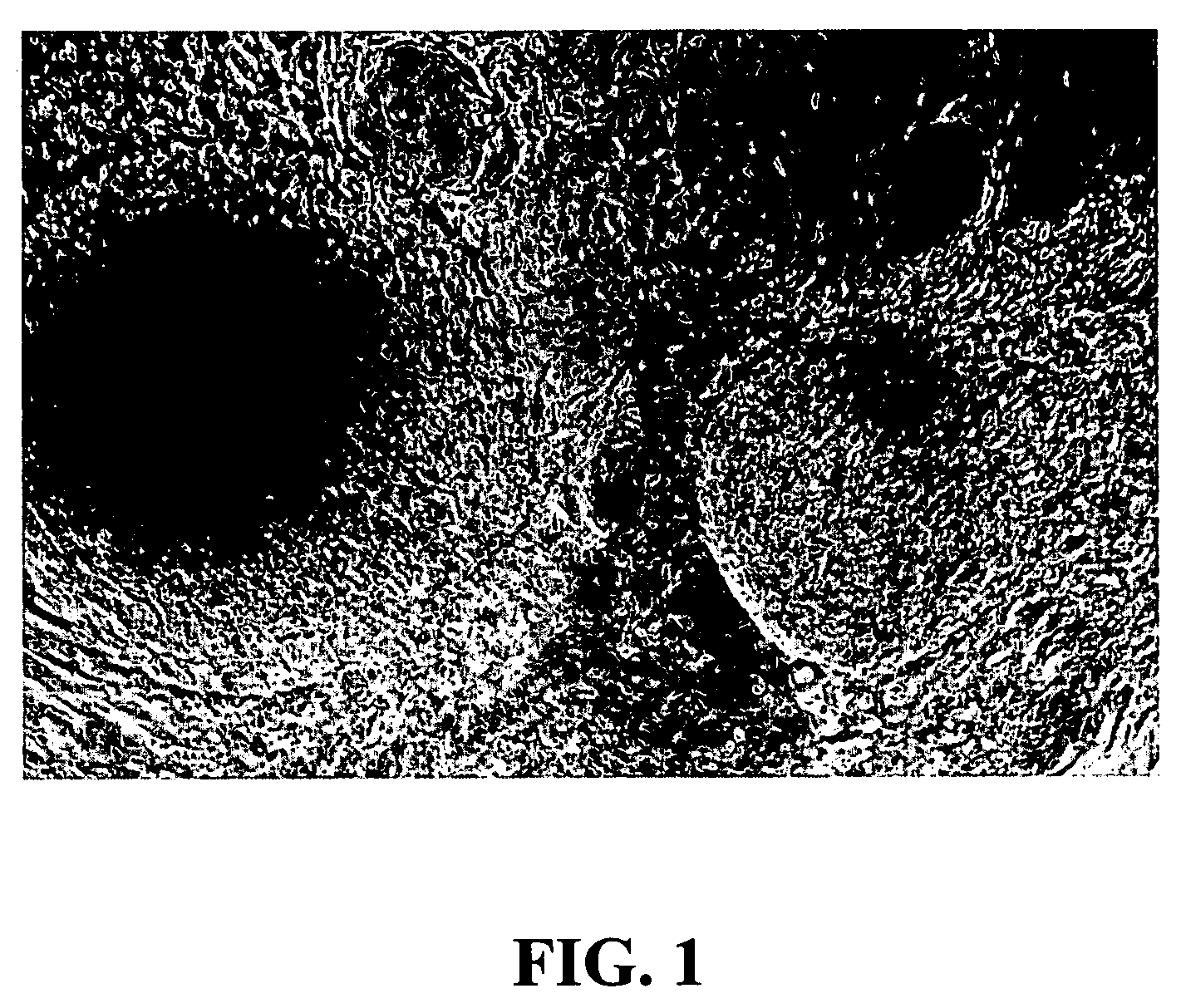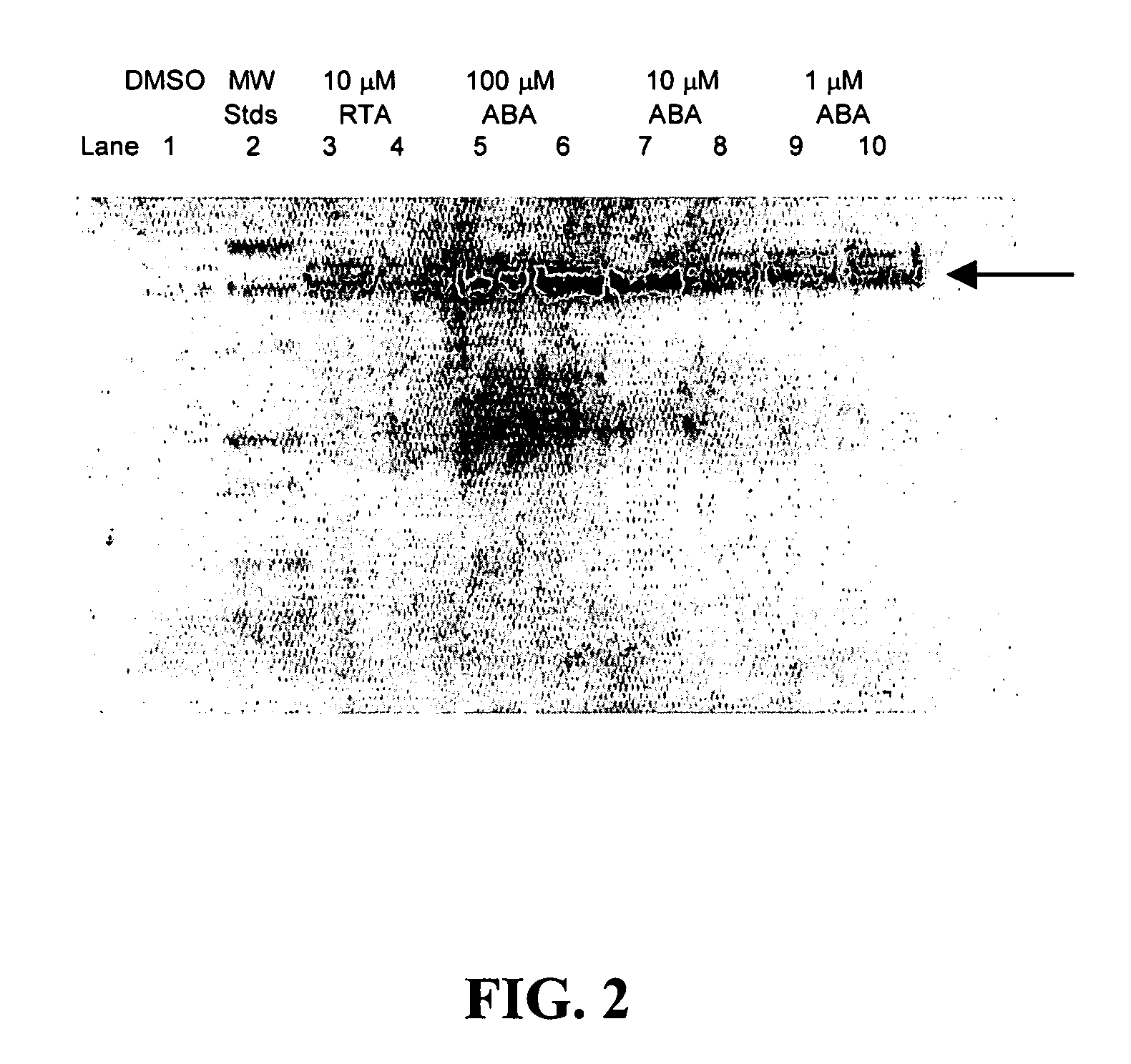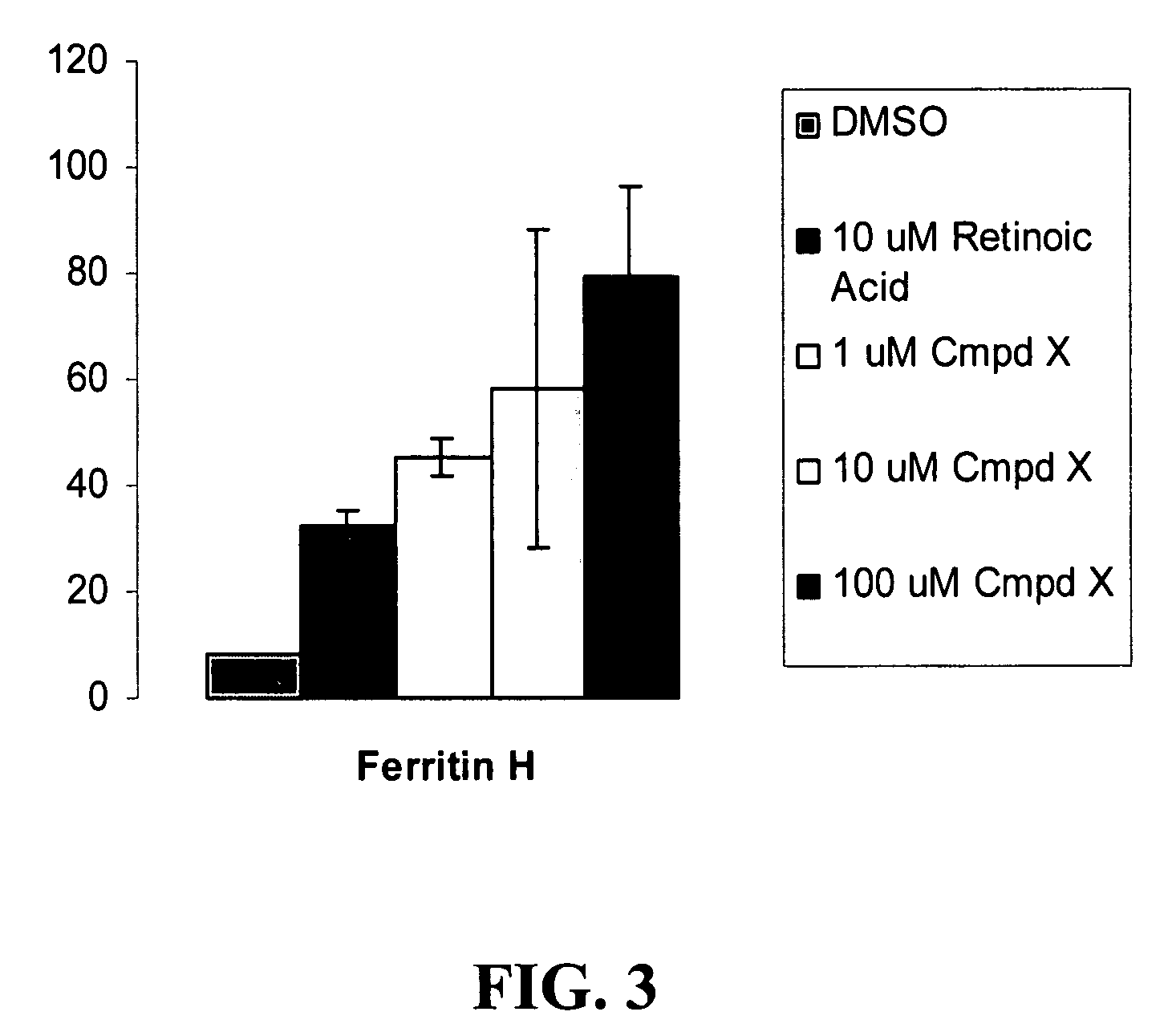Abscissic acid and derivatives thereof for the treatment of diseases
a technology of abscissic acid and derivatives, applied in the field of molecular biology and pharmacology, can solve the problems of lack of selectivity, preventing their widespread use in human medicine, and most synthetic chelators do not penetrate the blood-brain barrier, so as to reduce the iron concentration in the brain of the subject, increase the iron in the subject, and increase the beta-globin level
- Summary
- Abstract
- Description
- Claims
- Application Information
AI Technical Summary
Benefits of technology
Problems solved by technology
Method used
Image
Examples
example 1
ABA is a More Potent Inducer of FH than RTA
[0085]Ferritin H (FH) can suppress globin expression and chelate iron. The inventors have developed methods of fusing cells in vitro for the purpose of creating cross-species developmental erythroid heterokaryons. Fusing nucleated adult erythroid cells of one species with embryonic / larval erythroid cells of another species led to cross induction of developmentally-specific patterns of globin gene expression, providing evidence for developmental stage-specific trans-acting factors (Barker-Harrel et al., 1988; Broyles et al., 1989). In addition to detecting cross-activation of globin genes, cross-repression was also evident in some experiments involving heterokaryons (Broyles et al., 1994). These results led to a search for a repressor of the human adult β-globin gene, the gene mutated in sickle cell disease. The inventors noted that human K562 cells, an erythroleukemia line that expresses embryonic and fetal globins but no adult β-globin, co...
PUM
| Property | Measurement | Unit |
|---|---|---|
| excitation wavelength | aaaaa | aaaaa |
| concentration | aaaaa | aaaaa |
| phase contrast photo | aaaaa | aaaaa |
Abstract
Description
Claims
Application Information
 Login to View More
Login to View More - R&D
- Intellectual Property
- Life Sciences
- Materials
- Tech Scout
- Unparalleled Data Quality
- Higher Quality Content
- 60% Fewer Hallucinations
Browse by: Latest US Patents, China's latest patents, Technical Efficacy Thesaurus, Application Domain, Technology Topic, Popular Technical Reports.
© 2025 PatSnap. All rights reserved.Legal|Privacy policy|Modern Slavery Act Transparency Statement|Sitemap|About US| Contact US: help@patsnap.com



